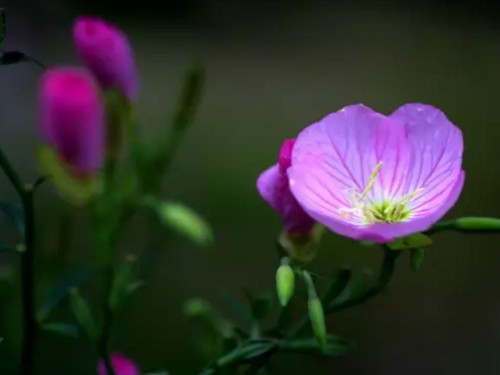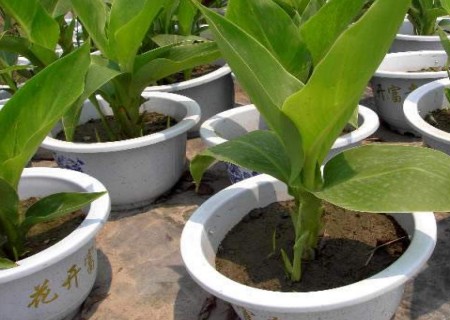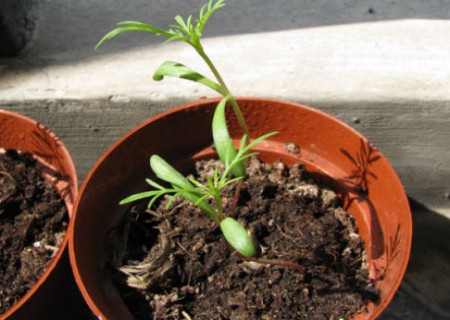Planting method of Evening Primrose
I remember seeing the beautiful evening primrose for the first time, this is the situation-the weeds are dotted with beautiful evening primrose. The design and color range from white to pink, becoming a beautiful scenery beside the teaching building. Then, it will naturally usher in people's favor, group photo as a souvenir, is the preferred place for graduates, like sitting in the flowers, accompanied by flowers, attracting people's infinite reverie.
Beautiful evening primrose flowers are very beautiful, open at night, pleasant aroma, suitable for decorating the night scene, used in the garden, flower beds are very suitable. Cooperate with other greening materials. Can be used for courtyard edge layout or rockery stone gap embellishment, but also suitable for a large area of ground cover flowers. Evening Primrose (Evening Primrose) is a low ground cover plant with strong growth, very drought tolerance and wide adaptability. From April to October, the flowers are beautiful pink, with a large diameter and a large number of flowers. It has a very strong ability of self-broadcasting and reproduction. Can be a large area of landscape layout, can also be cultivated as flower beds.

The beautiful evening primrose can not only be sown and cultivated directly in the open field, but also can be produced and sold as a ground cover plant in the nursery. You can sow seeds in spring, summer and autumn. It can also be sown and transplanted in protected areas in winter. Open every evening until near noon the next day. Unable to bear the severe cold, Jiangnan can take shelter from the wind and survive the winter in the open field. The propagation of beautiful evening primrose can be sown in autumn, like light, hardy, avoid stagnant water.
[land preparation]
Select loose, well-drained land, turn it deeply, bask it in the sun for 15 days, and then break it flat to make a bed 1.5 meters wide. Apply ring fertilizer or stable fertilizer or cake fertilizer as base fertilizer before deep turning, and then sow or transplant seedlings.
[sowing]
Evening primrose is usually propagated by seeds, sown in spring in the north, and sown in autumn or spring in all parts of the south of the Huaihe River. When sowing, the soil should be raked fine and flat, and the seeds should be sowed on the border surface, gently raked with a rake and covered with a thin layer of soil. The seeds are small and the soil cannot be covered thick, otherwise the germination and growth of the seeds will be affected. The soil should be kept moist after the seeds are sown. About 10-15 days after the evening primrose seeds were sown, the seeds could germinate seedlings.
Evening primrose seeds are often sown in autumn after mid-late September: the best way to disinfect the substrate for sowing is to stir-fry it in a pan so that any diseases and insects can be scalded to death. Soak the seeds in warm hot water (the temperature is about the same as facial wash) for 3 to 10 hours until the seeds absorb water and expand. For common seeds that germinate easily, this work does not have to be done.
For tiny seeds that are difficult to pick up with hands or other tools, wet one end of the toothpick with water, stick the seeds one by one on the surface of the matrix, cover the substrate 1 cm thick, and then put the seeding pot into the water. The depth of the water is 1 stroke 2 feet 2 tap 3 of the height of the flowerpot, allowing the water to soak up slowly.
For larger seeds that can be picked up by hand or other tools, put the evening primrose seeds directly into the substrate and order them at a distance of 3 × 3 cm. After sowing, the substrate was covered, and the thickness of the cover was 2-3 times that of the seed. After sowing, you can use sprayers and fine-hole showers to wet the sowing matrix, and later, when the basin soil is slightly dry, you should still pay attention to the watering strength not to wash the seeds up.
Management of evening primrose seeds after sowing: after sowing in autumn, when you encounter cold wave and low temperature, you can wrap the flowerpot with plastic film to keep warm and wet; after the seedlings are unearthed, the film should be opened in time, and before 9:30 every morning, or after 3:30 in the afternoon, let the seedlings receive the sun's light, otherwise the seedlings will grow very weakly. After most of the seeds come out, they need to plant seedlings properly: pull out the diseased and unhealthy seedlings, so that the seedlings left behind have a certain space between each other; when most of the seedlings grow 3 or more leaves, they can be transplanted into the pot.
[management]
The seedlings of Evening Primrose are very similar to weed seedlings before the extension of the second pair of true leaves, and can not be ploughed and weeded, but can enter only after the second pair of true leaves unfold. When growing into rosette seedlings, seedlings can be fixed or transplanted. When the row spacing is 65 cm × 65 cm and the plant is as high as 30 cm, soil is cultivated around the plant to prevent plant height from lodging. After transplanting or fixing seedlings, manure or urea was applied once to promote seedling growth, and the second fertilizer was applied at the first bud to facilitate flowering and fruiting.
[pest control]
After the rot disease, the roots of Evening Primrose gradually changed color and rotted, the leaves wilted and withered, and then the whole plant withered. Prevention and control methods: 1% lime water can be used, or 1500 times of 50% topiramate can be used, or 1000 times of 75% chlorothalonil can be irrigated.
[harvesting and processing]
The beautiful evening primrose has infinite inflorescences, and the fruit ripens one after another. Generally, half of the inflorescences can be harvested when they are ripe. When harvesting, cut (cut) the inflorescence with a branch scissors or knife, or pull up the whole plant, dry it, press it with a mill or beat it with a stick high, remove the fruit shell and impurities, and store it in a cool place.
Time: 2019-05-24 Click:
- Prev

Planting method of aquatic canna
Aquatic canna, many potted friends feel very beautiful as soon as they hear the name, in fact, it is so, her beauty is the same as the name, worthy of the name. Whenever a hundred flowers blossom in spring, aquatic canna can not bear loneliness and will join the ranks of striving for beauty.
- Next

How to grow potted moonflowers
Evening primrose, large flowers, golden yellow when it first blooms, gradually turns bright red in the later stage, mostly blooms at dusk, flowers as long as 6-9 months, not only has high economic and important value, but also has extremely high ornamental effect, very suitable for family potted cultivation
Related
- Fuxing push coffee new agricultural production and marketing class: lack of small-scale processing plants
- Jujube rice field leisure farm deep ploughing Yilan for five years to create a space for organic food and play
- Nongyu Farm-A trial of organic papaya for brave women with advanced technology
- Four points for attention in the prevention and control of diseases and insect pests of edible fungi
- How to add nutrient solution to Edible Fungi
- Is there any good way to control edible fungus mites?
- Open Inoculation Technology of Edible Fungi
- Is there any clever way to use fertilizer for edible fungus in winter?
- What agents are used to kill the pathogens of edible fungi in the mushroom shed?
- Rapid drying of Edible Fungi

